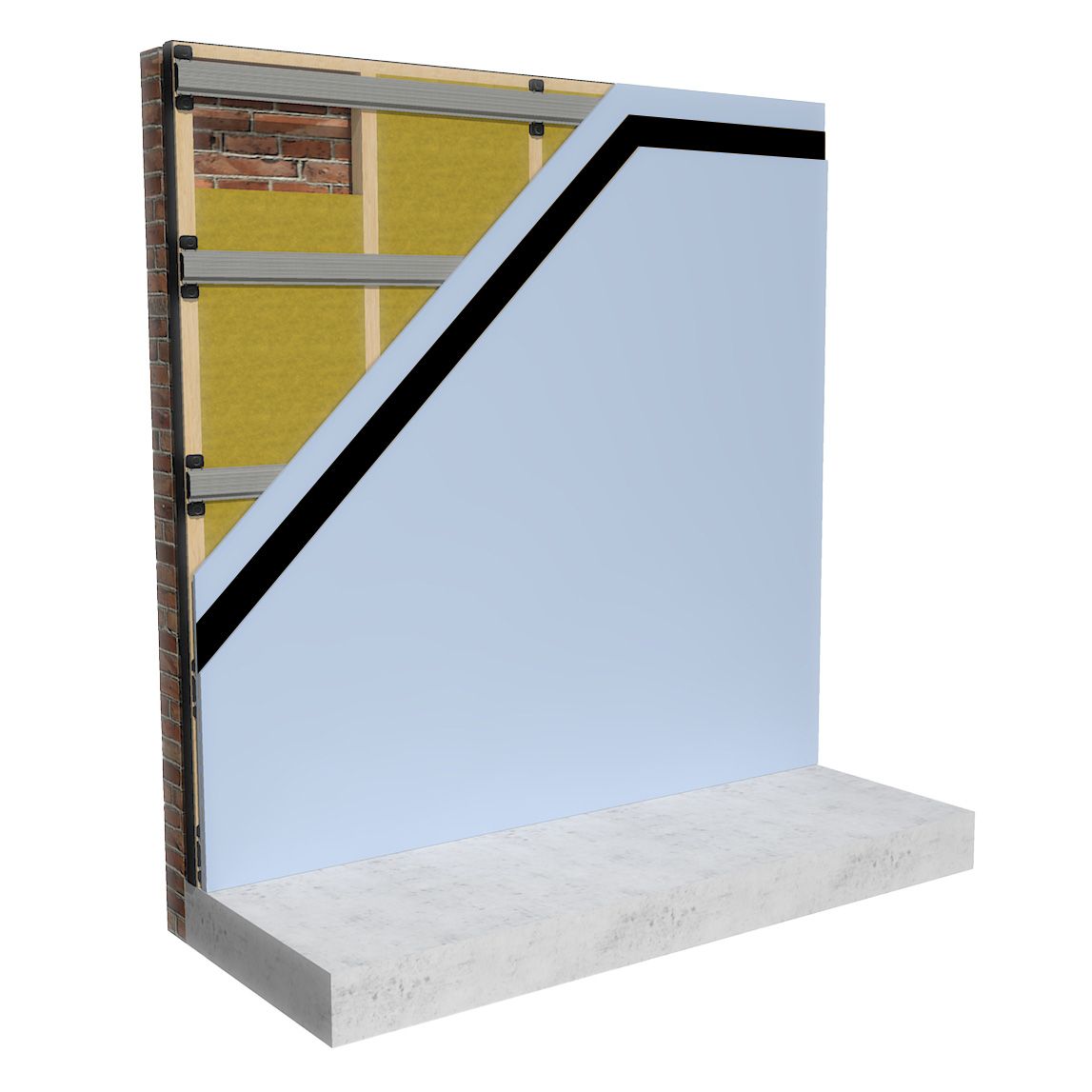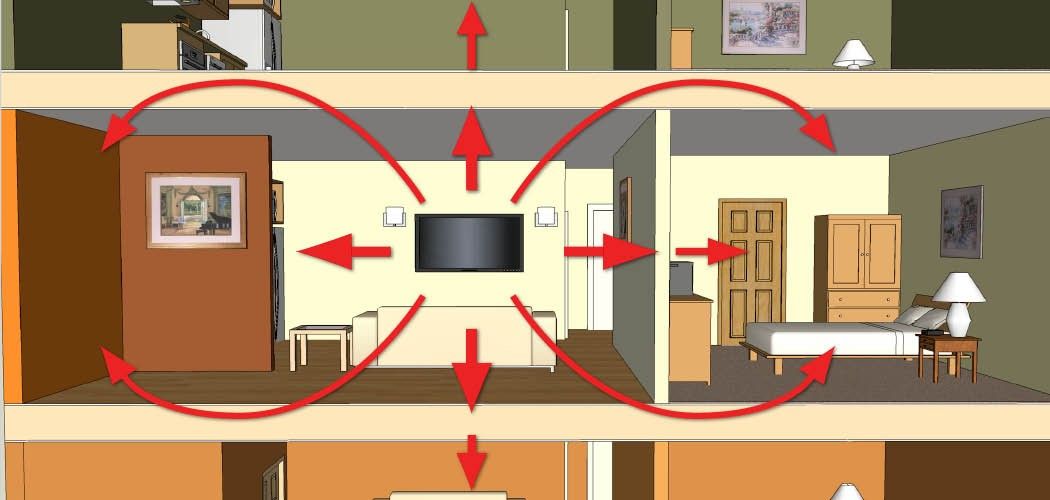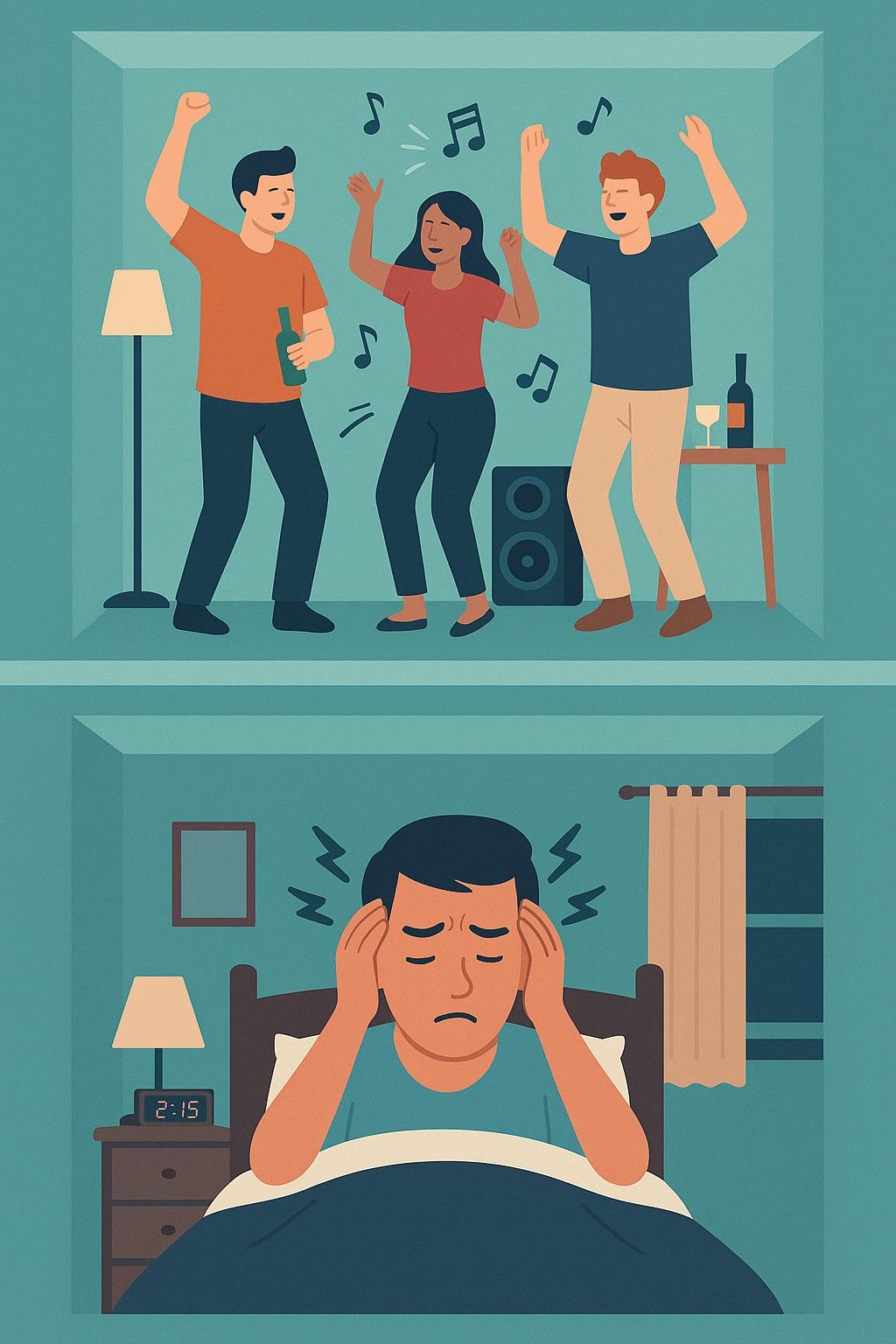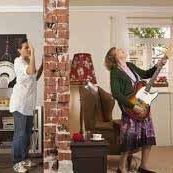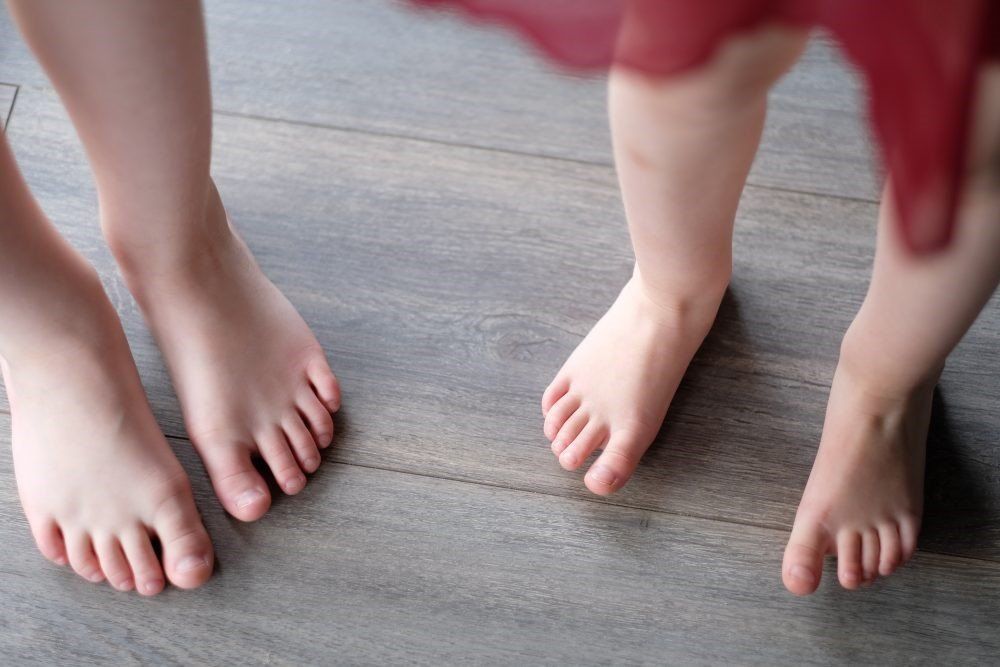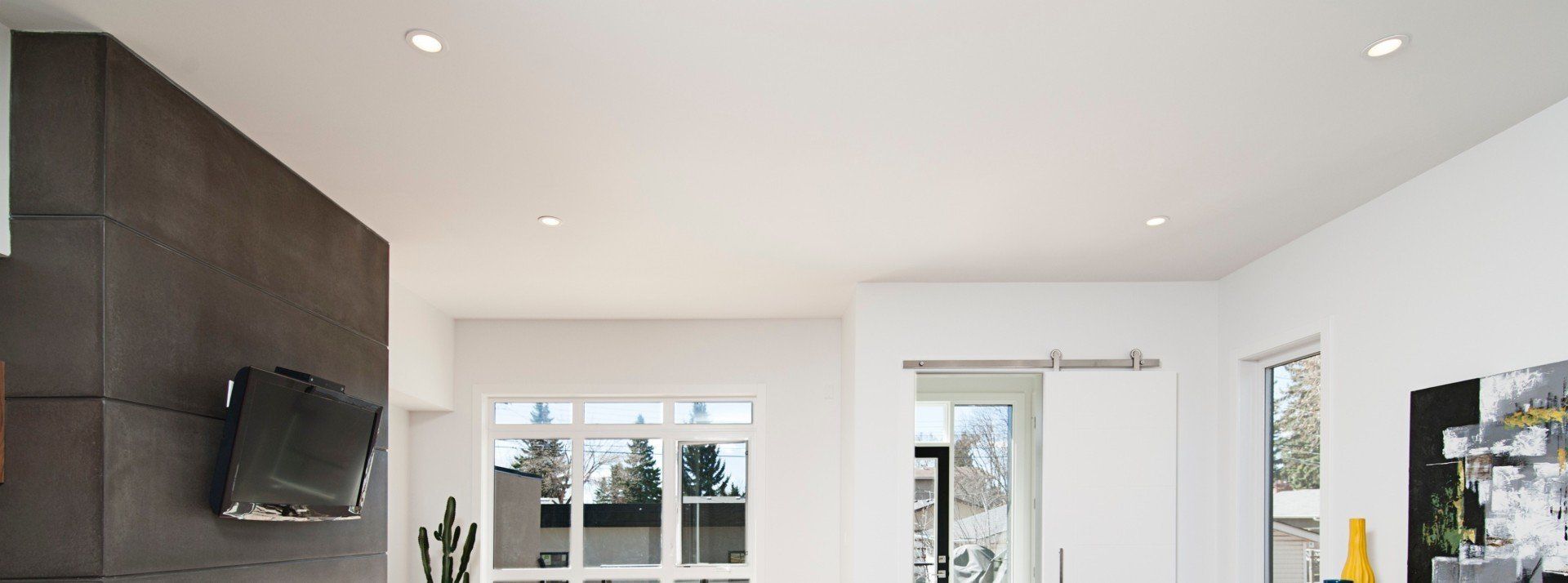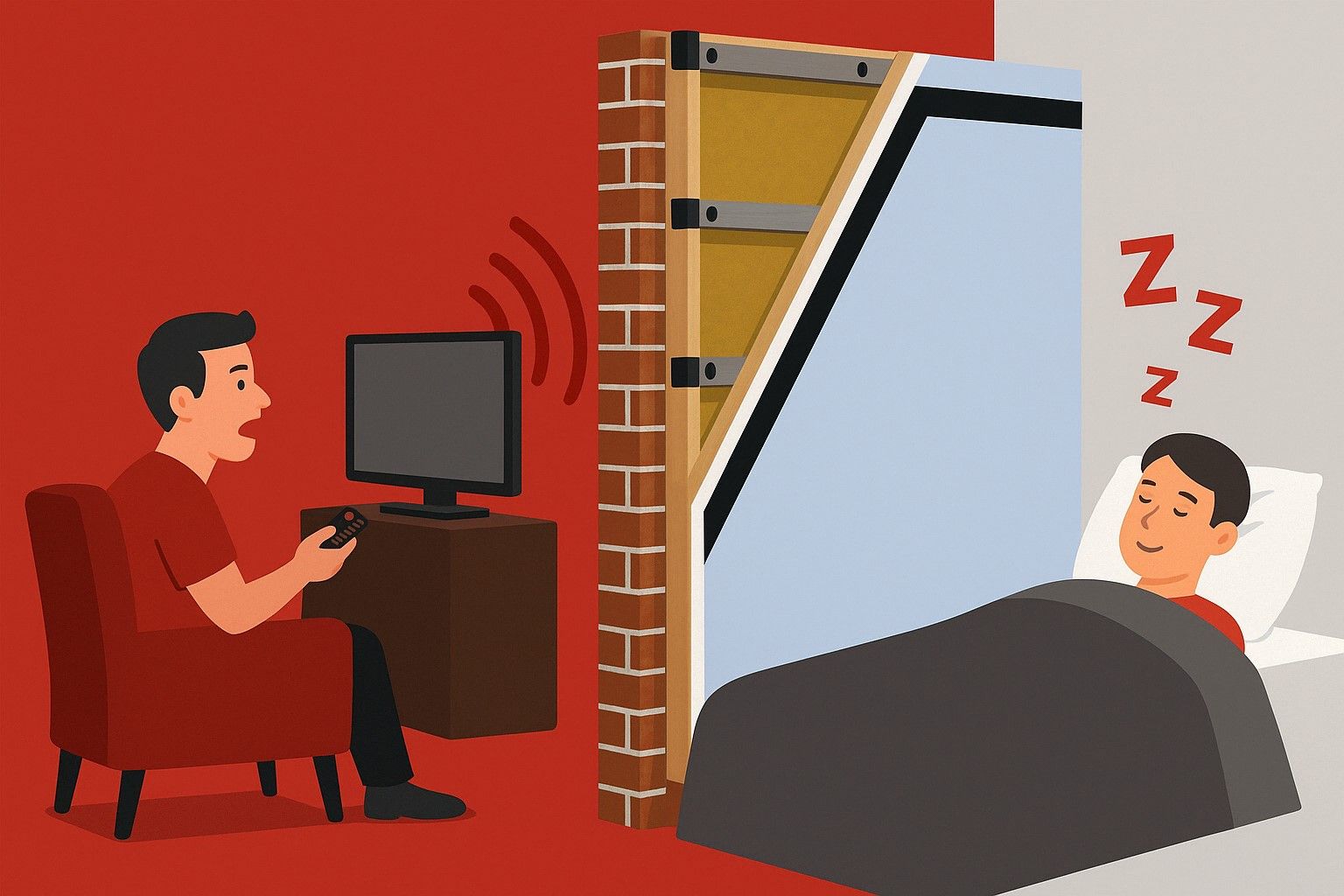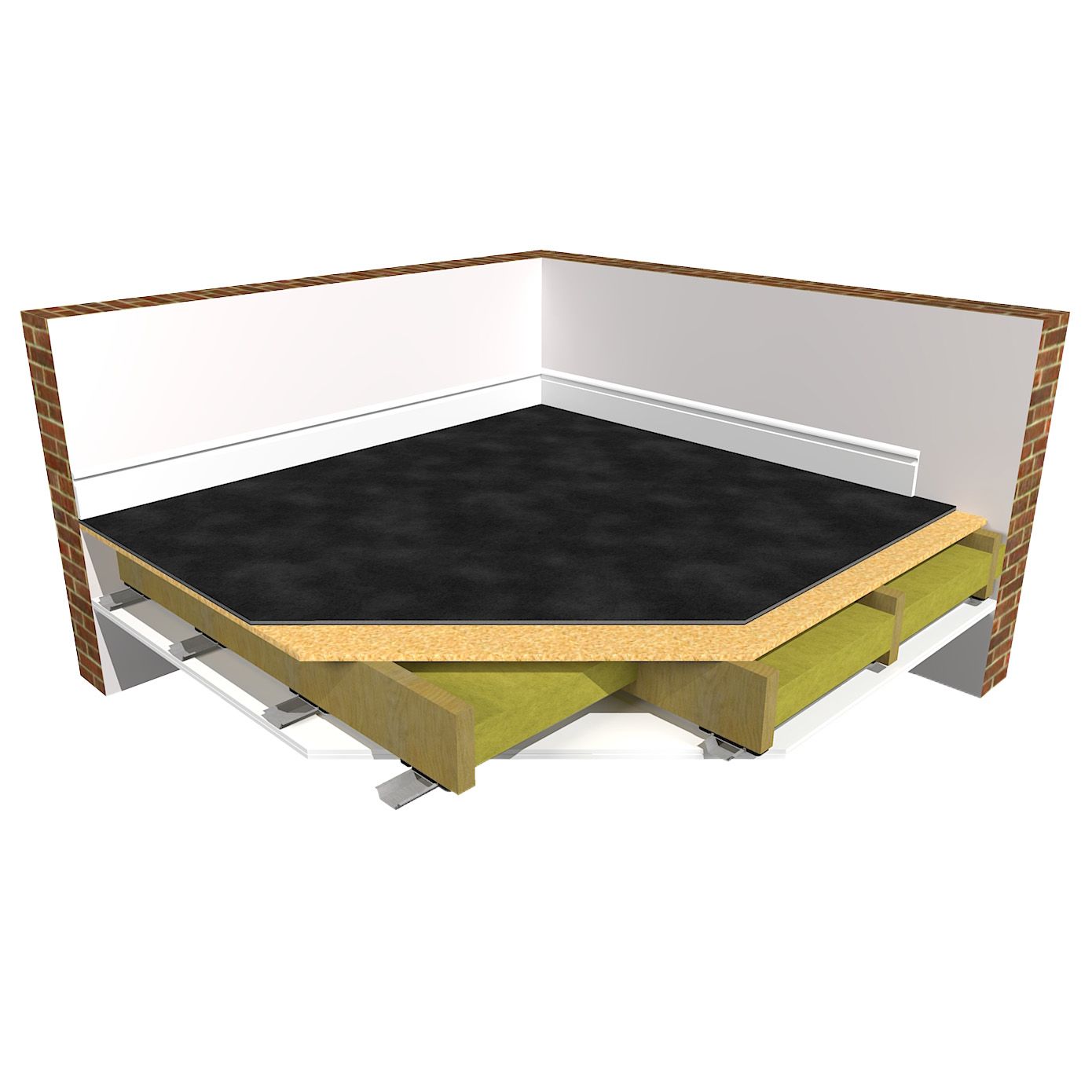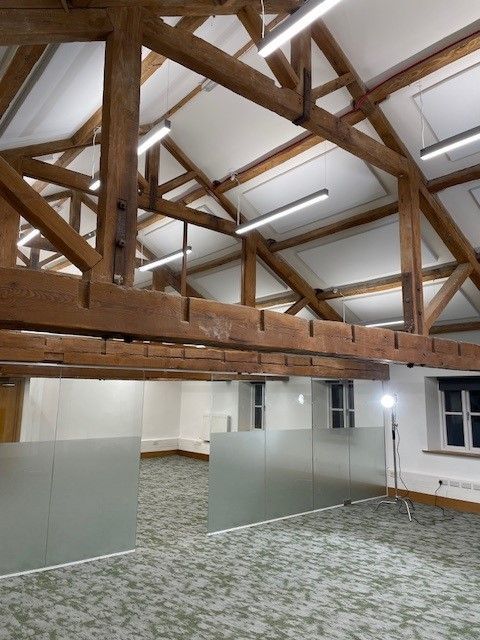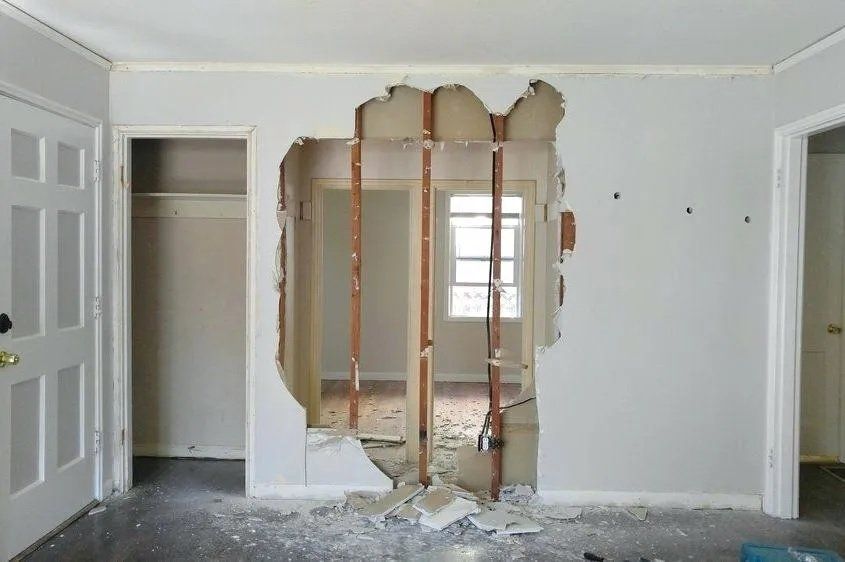What is flanking noise and how best to stop it?
What is flanking sound?
Flanking sound, or flanking noise typically refers to the sound that travels around or bypasses a barrier, such as a wall, floor or ceiling. In the context of acoustics and sound transmission, flanking sound occurs when sound waves find paths of least resistance. Often travelling through, around, or over structures. This can lead to sound leakage or transmission through indirect routes, even if the main barrier itself is designed to be soundproof.
For example, if you have a soundproof wall between two rooms, flanking sound could occur if sound waves travel through gaps around windows, doors, vents, or other structural elements attached to the wall.
Why does flanking sound occur?
Flanking noise happens because sound waves can travel through solid materials and structures. When sound encounters an obstacle like a wall, it can continue to be transmitted through the wall itself. In the case of flanking noise, sound waves find a path of least resistance (a sort cut), leading them to travel around or through building elements that are not well-sealed or insulated.
Factors that contribute to flanking noise include:
Structural Weak Points: If there are gaps, cracks, or poorly sealed joints in walls, floors, or ceilings, then sound can find its way through these openings
Flanking walls, floors and ceilings: Vibrations from one area can transmit sound to another through shared structural elements, like studs or beams, creating a flanking noise effect
Airborne Sound: Airborne sound waves can enter one space, travel through gaps or openings, and then re-emerge as flanking noise in another space
Impact Noise: Footsteps or other impact sounds can generate vibrations that travel through floors and walls. For example, impact noise from footsteps above can produce flanking noise in adjacent areas, such as the walls
Voids: Areas such as wall cavities, raised floors and suspended ceilings which create a space for sound to be amplified in creating 'the drum effect'
Suspended Ceilings: Are commonly used in commercial buildings and office spaces as well as residential properties. The space created between the original ceiling and secondary ceiling can act as a void for sound to amplify and echo within
Ducts and Pipework: When sound travels along pipes and through the buildings structure, this can create a path for noise to enter adjacent spaces
Dot and Dab Plasterboard: Creates small gaps behind the plasterboard and the wall which can contribute to flanking noise
Chimney Flues: Sound can be transmitted through or around the chimney structure from one area to another. Chimney flues are designed to vent gases and smoke from fireplaces, stoves, or heating appliances safely out of a building. However, they can sometimes transmit sound to different parts of the building
Doors: If the wall is well soundproofed then the door will be the weakest point (especially the gaps around the door if it is not airtight)
Ceiling holes for lighting:
Spotlights and downlights require big holes to be cut out of the ceiling which sound can pass through
How to stop flanking noise
Stopping or reducing flanking noise involves identifying and addressing the paths through which sound waves can bypass or travel around. Here are some steps you can take to minimise flanking noise:
- Seal any obvious small gaps and openings. Inspect the area for potential gaps around doors, windows, electrical outlets, and any other openings. Use acoustic door seals and acoustic sealant to close these gaps and prevent sound from leaking through
- When soundproofing a wall, also use acoustic mineral wool in voids between joists in the floor along the party wall up to about 150cm in from the offending wall
- Adding Acoustic Mineral Wool also helps to stop sound from travelling round and amplifying in wall, floor and ceiling cavities
- Decouple Structures: Decoupling involves creating an air gap to prevent vibrations and sound from easily travelling through structural connections. This can be achieved by using tried and tested isolation solutions such as the ReductoClip System for floors and ceilings
- Address floor and ceiling flanking by using acoustic SoundMats directly to the floor, or resilient ReductoClips to the timber joists of ceilings to isolate these surfaces and minimise the transmission of any flanking sound
- Sound can travel through ventilation systems. Use acoustic ducting and consider adding baffles or dampening materials within ducts to reduce noise transmission
- Double glazing for windows: If windows are a source of flanking noise, consider using double glazing (two layers of glass with an air gap in between) to improve sound insulation
- Choose solid doors: Opt for solid core doors instead of hollow doors, as they offer better sound insulation due to having more mass and use drop down door seals
- Electric sockets: Can create holes in the wall and gaps for sound to pass through. Soundproof socket box inserts such as acoustic putty pads can be used in this instance
- Remove dot and dab plasterboard prior to installing soundproofing
- Soundproof around the chimney breast (as well as the alcoves) if you can hear sound coming through the chimney breast. Learn more about how to soundproof a chimney
- For lighting, when soundproofing a ceiling the recommendation would be to use pendant lights or surface mounted lights
Insulating cavity spaces using acoustic mineral wool
If I soundproof my wall, will there still be flanking noise?
Every building and every structure is different and occasionally even though the sound appears to be coming through the party wall, occasionally it can also be heard through the connecting floor. This flanking noise can occur when timber floor joists run parallel to the treated wall and the cavity space within the joist space below the floorboards acts as a chamber for sound to resonate and amplify within.
An easy way to check this is to do a simple ear test and listen to the floor at different points in the room and about 1m from the party wall. If you can still hear some noise, then the best way to treat this is by adding acoustic mineral wool to the void below the floor boards, up to 1.5m into the room from the wall.
For any help and advice, or if you are unsure if flanking is an issue in your property, then the recommendation is to always speak to professionals who can provide tailored solutions based on your specific situation.
Share
"We don’t expect you to become an overnight expert in soundproofing, that’s what we’re here for."
